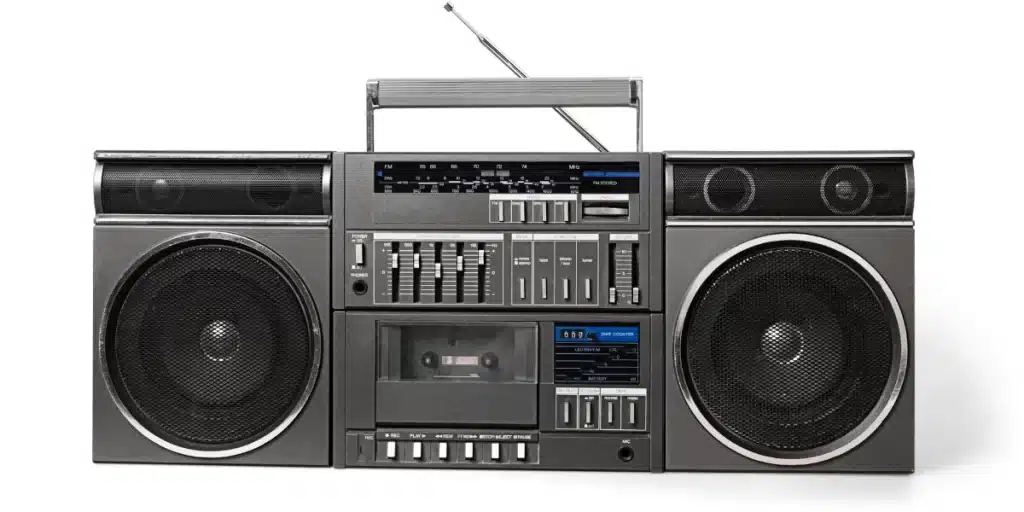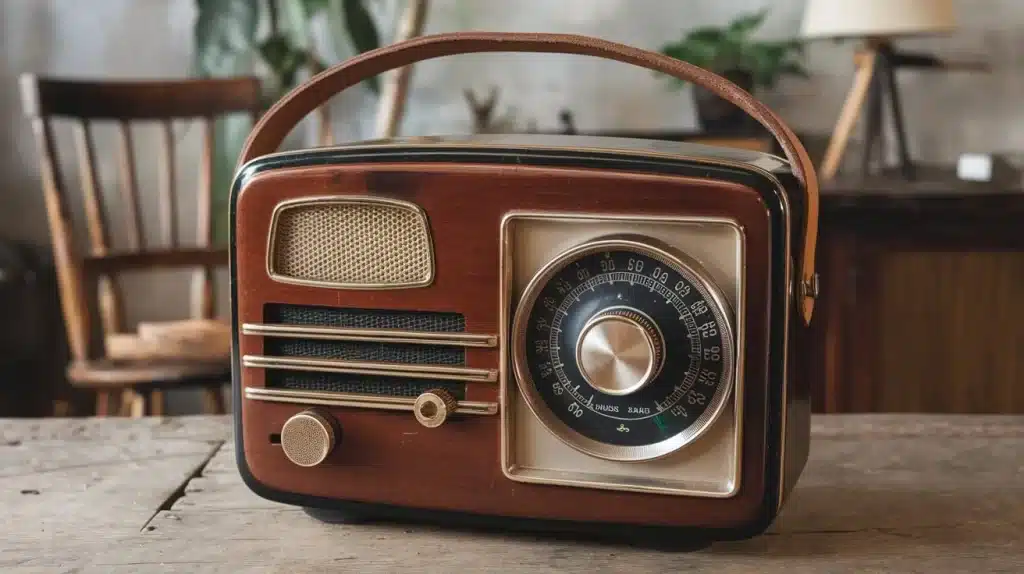How to Use the Radio:
- Turn on the Radio: Use the power button or switch.
- Select AM or FM: Choose the band depending on the station you want.
- Tune to a Station: Use the tuning dial or scan button to find a station.
- Adjust the Volume: Set the sound level to your preference.
- Position the Antenna (if needed): For better reception, adjust the antenna.
- Listen and Enjoy: Once tuned in, enjoy the broadcast.

Introduction
Radios have been a staple of communication, entertainment, and information for over a century. Whether you’re using a traditional AM/FM radio, a two-way radio, or an internet-based radio, the basics of how to use one are generally straightforward. This guide aims to provide simple and direct instructions on how to use a radio, covering various types of radios, their functions, and how they can be used effectively.
1. What is a Radio?
A radio is a device that uses electromagnetic waves to transmit and receive sound, mainly through air. These sound waves can be used to convey music, news, weather updates, and more. Radios are essential communication tools, often used in both everyday life and emergencies.
2. Types of Radios
Radios come in various forms. Each type operates in a slightly different way but serves a similar purpose: transmitting and receiving audio.
AM/FM Radios
These are the most common and traditional types of radios. They operate on amplitude modulation (AM) and frequency modulation (FM) frequencies.
Two-Way Radios
Two-way radios, such as walkie-talkies or ham radios, allow users to both send and receive signals. They’re widely used in industries like security, construction, and emergency services.
Digital Radios
Digital radios convert sound into digital signals, offering better sound quality and more channels than traditional analog radios.
Internet Radios
Internet radios are online-based radios that use an internet connection to stream radio stations from around the world.
Satellite Radios
Satellite radios use satellites to broadcast digital signals, offering a wider range of stations and coverage compared to traditional AM/FM radios.
3. How to Use an AM/FM Radio
Step-by-Step Guide to Operating an AM/FM Radio:
- Turn the Radio On – Most AM/FM radios have a simple ON/OFF switch or a power button.
- Select the Band – Use the band selector to choose between AM or FM frequencies.
- Tune the Radio – Turn the tuning dial or press the tuning buttons to find a station.
- Manual Tuning: Move the dial slowly until you hear clear audio.
- Automatic Tuning: Some modern radios have an auto-tuning function that scans for the nearest station.
- Adjust the Volume – Use the volume control knob to adjust the loudness of the sound.
- Adjust Antenna (if necessary) – For better signal reception, especially on AM frequencies, adjust the antenna.
- Enjoy the Broadcast – Once tuned in, you can enjoy the content being broadcasted, whether it’s music, talk shows, or news.
Common Problems and Troubleshooting:
- Poor Reception: If the sound is unclear or has a lot of static, try adjusting the antenna or moving the radio to a different location.
- Station Drift: Older analog radios may lose the station you’re listening to, requiring you to retune the radio occasionally.
- Dead Batteries: If the radio is not turning on, check if the batteries need replacing or if the device needs to be plugged into a power source.
4. How to Use a Two-Way Radio
Two-way radios are widely used for communication in various industries and outdoor activities. Here’s how to operate them:
Basic Operation of a Two-Way Radio:
- Power the Radio On – Just like AM/FM radios, most two-way radios have an ON/OFF button or switch.
- Select the Channel – Use the channel selector to choose the frequency or channel you want to communicate on.
- Push to Talk (PTT) – Hold the PTT button when you want to speak. Release the button when you’re done to hear the response from others.
- Adjust the Volume – Set the volume to a comfortable level.
- Listen and Respond – Once you’ve finished speaking, listen for replies from others on the same channel.
Radio Etiquette and Communication Protocols:
- Use Clear Language: Keep your message short and to the point. Avoid unnecessary words or phrases.
- Wait for a Response: Don’t interrupt others. Wait for a break in communication before speaking.
- Use Call Signs (if necessary): In some professional settings, users may be required to use call signs (e.g., “Base to Unit 1”).
- Say “Over” and “Out” Appropriately: Use “over” to signal that you’re done speaking but expect a response, and “out” to indicate the conversation is over.

5. How to Use a Digital Radio
Digital radios offer improved sound quality and additional features. Here’s how to operate them:
- Power On – Turn on the digital radio using the ON/OFF switch.
- Select the Mode – Choose between different radio modes, such as FM, DAB (Digital Audio Broadcasting), or Bluetooth.
- Scan for Stations – Use the scan function to automatically search for digital stations.
- Select a Station – Once the scan is complete, choose a station from the list.
- Adjust the Volume – Set the volume to your desired level.
- Preset Favorite Stations – Many digital radios allow you to save your favorite stations for easy access.
6. How to Use an Internet Radio
Internet radios offer a vast array of stations from all over the world, and they use your internet connection to stream content.
- Connect to Wi-Fi – Before using your internet radio, make sure it’s connected to your Wi-Fi network.
- Select the Mode – Choose “Internet Radio” mode on your device.
- Search for Stations – Use the search function to find a station by name, genre, or location.
- Stream the Station – Once you’ve found a station, simply click on it to start streaming.
- Adjust the Volume – Control the sound with the volume knob or buttons.
7. How to Use a Satellite Radio
Satellite radios provide access to a wide range of stations via satellite signals, often requiring a subscription service.
- Power the Radio On – Turn the satellite radio on using the power button.
- Ensure Subscription – Satellite radios often require a subscription service (such as SiriusXM). Make sure your subscription is active.
- Select a Channel – Use the channel selector to browse and choose a station from the list.
- Set Favorites – Satellite radios allow users to save their favorite stations for easy access.
- Adjust the Volume – Use the volume control to set the sound to your desired level.

8. Frequently Asked Questions (FAQs)
1. What should I do if my AM/FM radio is not picking up any stations?
- Check if the radio is turned on and the volume is up.
- Make sure the antenna is extended and try adjusting it for better reception.
- Try tuning into different stations to see if any signal comes through.
2. How far can a two-way radio communicate?
- The range depends on the type of two-way radio and terrain. Most consumer-grade walkie-talkies offer a range of 1-2 miles, while more powerful models can reach up to 10-20 miles or more in ideal conditions.
3. Can I use a satellite radio without a subscription?
- No, most satellite radios require an active subscription to access the available channels.
4. Do internet radios need Wi-Fi?
- Yes, internet radios require a Wi-Fi connection or a direct ethernet connection to stream radio stations.
5. What’s the difference between AM and FM?
- AM (Amplitude Modulation) radio waves are better for long distances and are commonly used for talk radio, while FM (Frequency Modulation) waves offer better sound quality and are mostly used for music.
9. Conclusion
Radios remain a vital tool in modern society, offering entertainment, communication, and information across various platforms. Whether you’re using an AM/FM radio to listen to your favorite music station, communicating with a two-way radio on a construction site, or streaming global content via an internet radio, understanding how to use a radio is simple and can enrich your life in many ways. By following this guide, you can confidently use any type of radio for its intended purpose, making the most of this timeless technology.